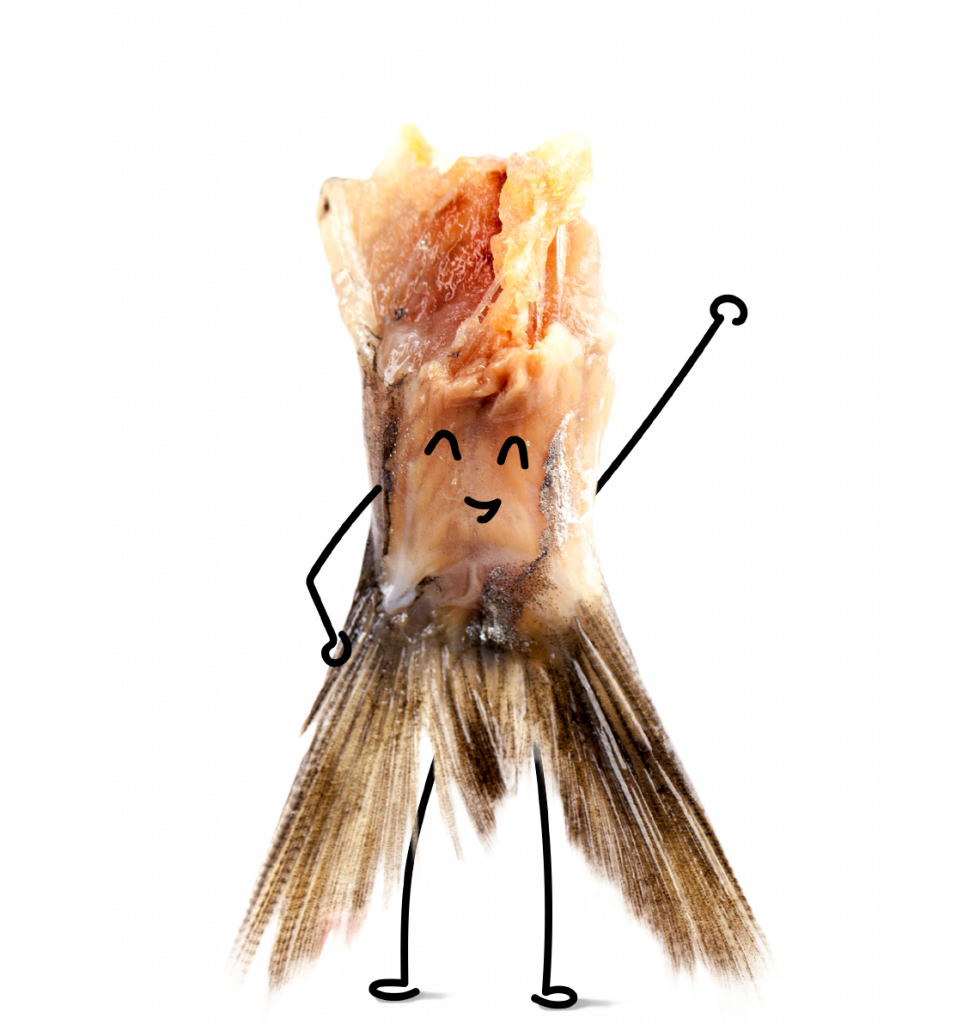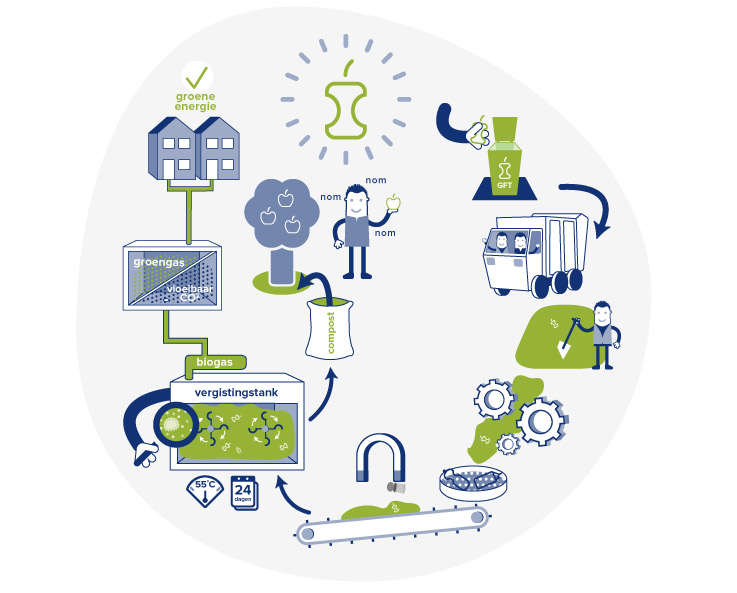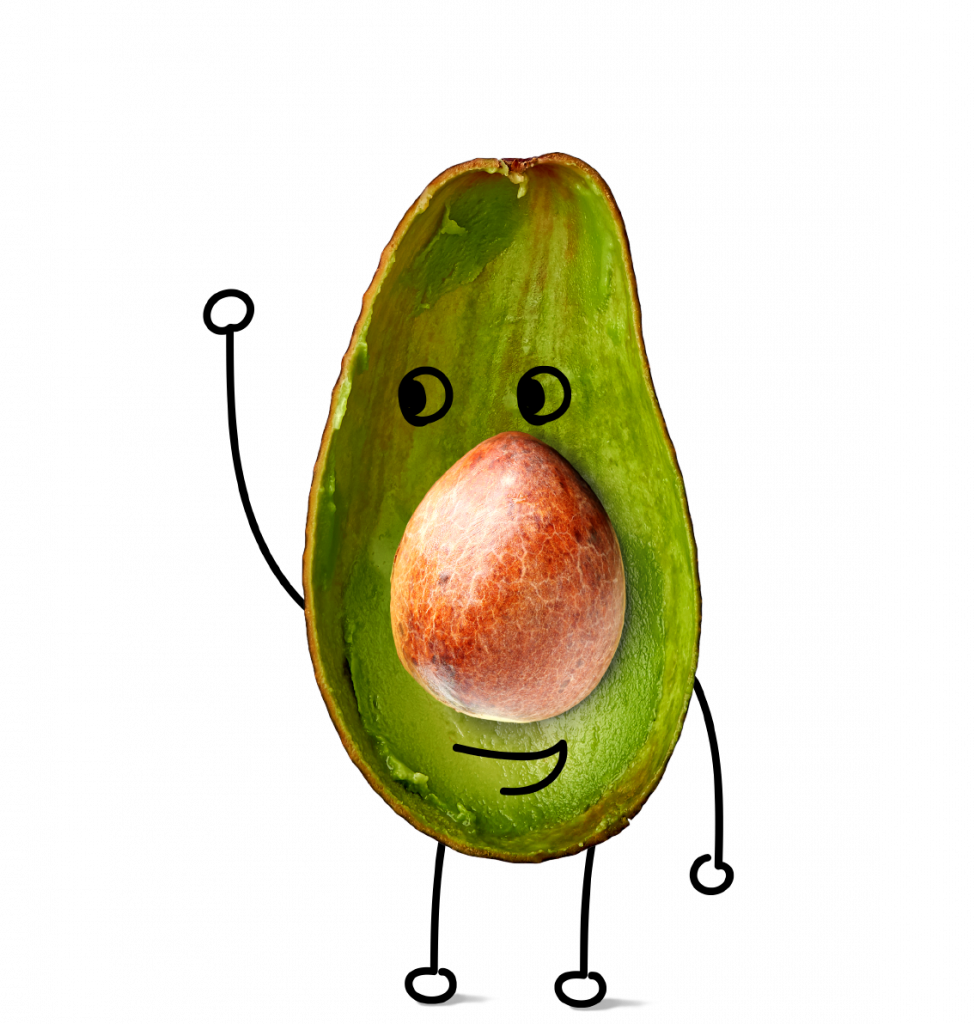Coffee grounds, apple peels, faded tulips: much of our waste can be categorised as vegetable, fruit and garden waste (VFG). Almost two thirds of the VFG waste is immediately processed into compost. A third is fermented. In addition to compost, this also produces biogas (green gas). Therefore, throw your old bread, baked, cooked and raw food scraps and fine garden waste in the organic waste container!

What belongs to VFG waste?
- Vegetable and fruit scraps and peels
- Food scraps (cooked, fried & raw, also bones, bones and egg shells)
- Bread, dough, rice, pasta
- Peanut and nut shells
- Loose tea, tea bags, coffee filters, coffee pods.
- Litter (hay, straw, sawdust) from small animals (rabbit or guinea pig) including droppings.
- Flowers and houseplants
- Fine garden waste
Having doubts? This flyer (only in Dutch) shows what is part of the VFG and what is not. Or check the waste separation guide (only in Dutch) or throw it in with the residual waste.
Tips for during summer
VFG waste left in a container can end up smelling bad, but there are ways to prevent that. Here are a few tips we’ve put down for you:
- Meat and fish remains are also allowed with VFG waste. Wrap them in a piece of newspaper to prevent the smell from getting out. A bit of paper in the VFG container is allowable as it will simply decompose with the rest of the waste.
- Place the VFG container in the shade and not where it will be exposed to direct sunlight.
- Leave the lid ajar. Proper airing will prevent smells from developing in the container.
- Make sure the waste is as dry as possible before putting it in the container. Let grass clippings dry out and leave leftover food to drain in the sink.
- A good cleaning also helps. Clean the container regularly with green (organic) soap. Do not work with salt or chemical agents, because then we cannot make garden fertilizer or fuel from them.
- You can stop attracting flies by putting the container in the shade and you can keep maggots away with a few sprigs of ivy or lavender.

How is VFG waste processed?
Almost two thirds of the VFG waste is immediately processed into compost and slightly more than a third is fermented first. In addition to compost, this also produces biogas (green gas).
Compost is used by farmers, horticulturists and municipalities to enrich the soil. The green gas goes directly into the natural gas network, which means you can use it to take a nice hot shower at home. Did you know that a bucket with 5 kilos of VFG waste can provide enough gas for a hot shower for five minutes? Watch the video to see what our final processor does with VFG waste.
Food leftovers with VFG
Did you know that at present, VFG waste makes up a third of residual waste? Most of this comes from food leftovers. This is a shame because if VFG waste is thrown in with residual waste, it will be incinerated together. That is bad for the environment and it also costs money.
Of course, nobody wants to throw away food, but it still sometimes happens. Perhaps you cooked too much for dinner or your children didn't want it. So you put the food in the fridge for later, but after a few days, it’s still there and starting to go bad. Under those circumstances, there is only one real option: throw it away. But if you do throw it away, put it in with the VFG waste so that it can be used to make plant fertiliser and biofuel. That way, we can make sure that something useful is still made from your leftover food.
TV West made an interesting episode about the recycling of organic waste. Watch the episode!


